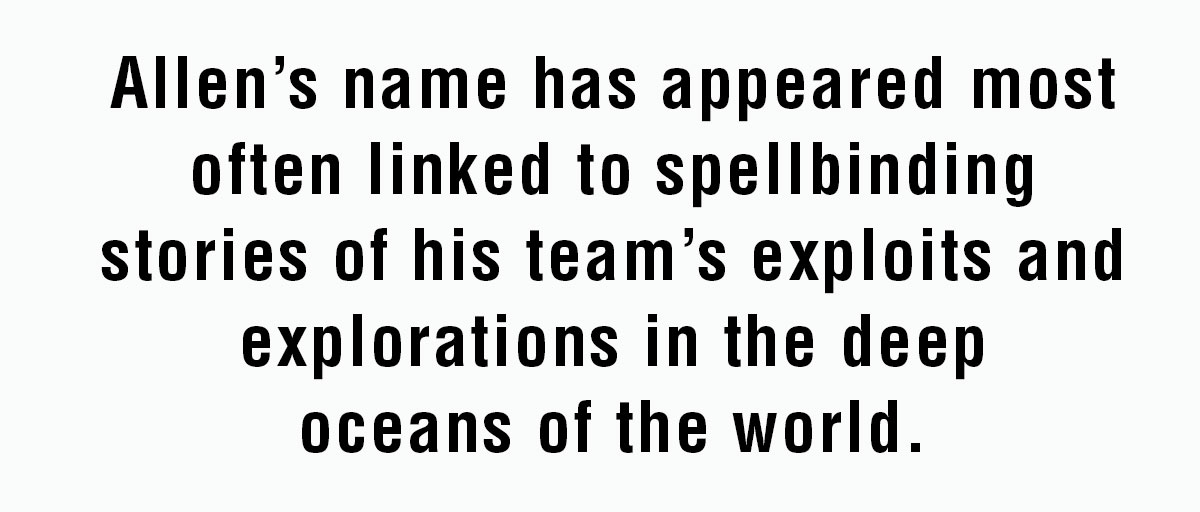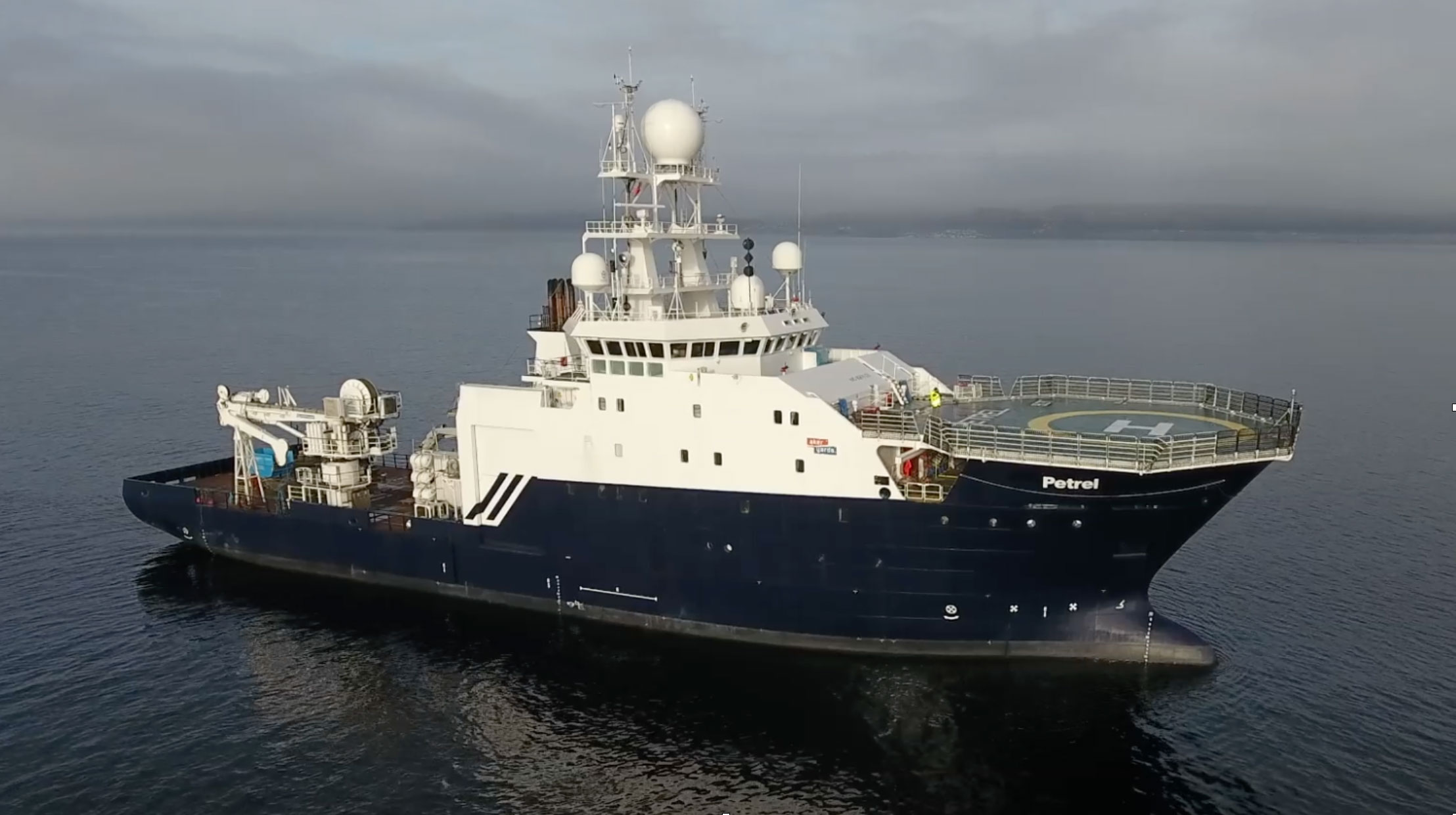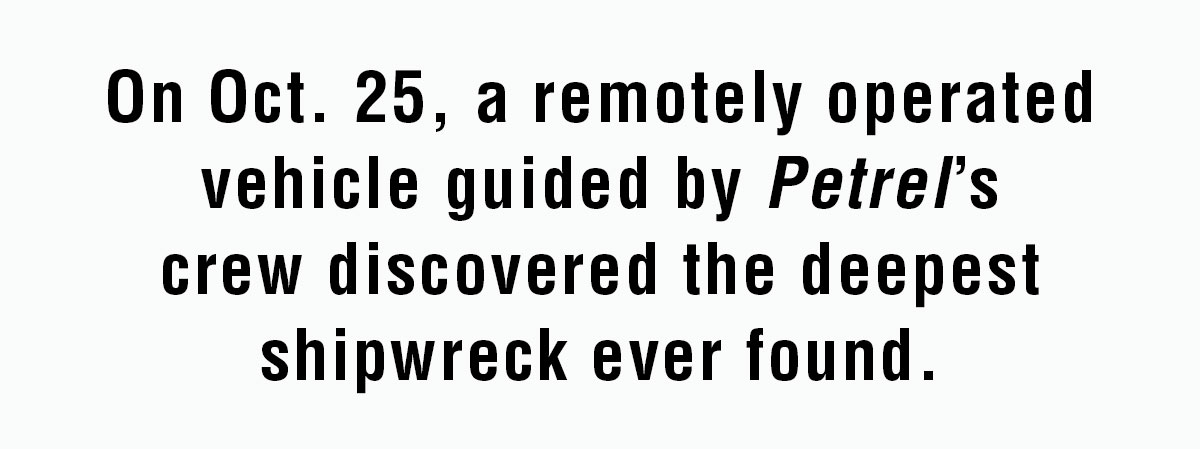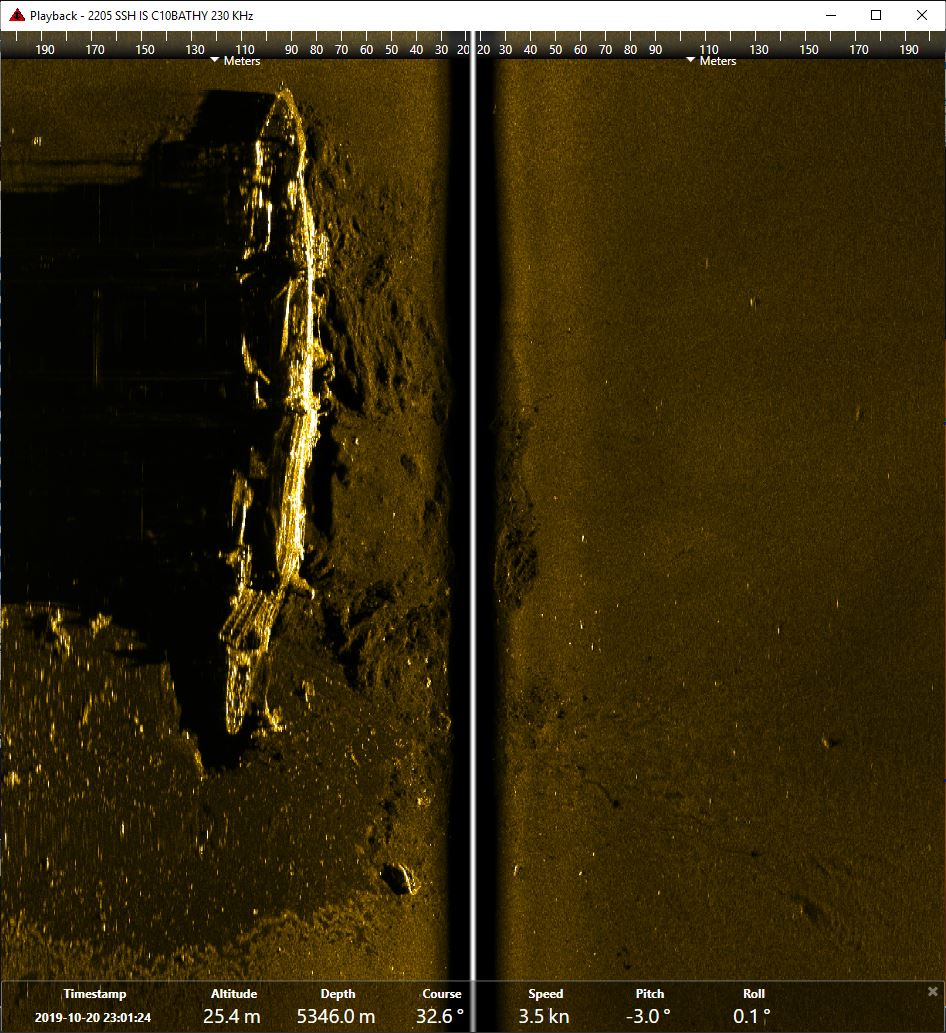
Allen died a year ago from complications of non-Hodgkin’s lymphoma. He was just 65, but he lived a big life.
He was an early force at Microsoft (he named the company), where he and co-founder Bill Gates shepherded the personal computer from “a hobbyist curiosity to mainstream technology,” as The New York Times wrote in his obituary on Oct. 15, 2018. He left Microsoft in 1985 after his first bout with cancer.
With an estimated worth of some US$26 billion, the entrepreneur went on to become a sports mogul, philanthropist and cultural icon.

In recent years, even after his death, Allen’s name has appeared most often linked to spellbinding stories of his team’s exploits and explorations in the deep oceans of the world. His ship, the Research Vessel Petrel, has become as familiar to some followers as Jacques Cousteau’s Calypso, Robert Ballard’s Knorr, or Captain Cook’s Endeavour. Its name has become synonymous with adventure and discovery.
The list of its discoveries is impressive—more than 30 sunken warships, including: USS Indianapolis, the ship that delivered the first atomic bomb components to Tinian in 1945 before it was sunk by a Japanese submarine and many of its crew were notoriously eaten by sharks; USS Lexington, an aircraft carrier sunk in 1942 during the Battle of the Coral Sea; USS Juneau, on which all five Sullivan brothers and 622 crewmates died when it was sunk in 1942 by a Japanese torpedo during the Battle of Guadalcanal.
Just this year alone, Petrel found USS Hornet, the aircraft carrier that delivered Doolittle’s Raiders on their mission to bomb Tokyo after Japan attacked Pearl Harbor on Dec. 7, 1941 (the ship was sunk in 1942 during the Battle of the Santa Cruz Islands); USS Wasp, a carrier sunk by four Japanese torpedoes in 1942; and two Japanese aircraft carriers found last month, IJN Kaga and IJN Akagi, both part of the six-carrier force that launched the planes that attacked Pearl Harbor (they were among four Japanese carriers sunk during the pivotal Battle of Midway six months later).

On Oct. 25, a remotely operated vehicle guided by Petrel’s crew discovered the deepest shipwreck ever found—the USS Johnston, a Second World War Fletcher-class destroyer lying scattered 6,220 metres (20,400 feet) beneath the surface of the Philippine Sea. The ship was lost during the Battle of Samar, one of four battles during the Battle of Leyte Gulf in October 1944.

The Johnston wreckage lies just beyond the rated operational limit of Petrel’s remotely operated vehicle.

“During this dive, our deepest yet, we encountered challenges that impacted our ability to operate and obtain the typical, high-quality survey that we strive for,” said researcher and ROV pilot Paul Mayer.
The news came just over a week after Petrel found Kaga and Akagi during an extended exploration of the expansive Midway site that covered more than 500 square nautical miles. Two other Japanese carriers—Sōryū and Hiryū—sunk during the battle remain to be discovered.

“The efforts made by the Vulcan team aboard Petrel in finding the wrecks of Kaga and Akagi will give historians a new perspective” on what some describe as the Pacific War’s most important battle.

“It required a level of investigation, analysis and survey of a carrier-based engagement initially separated by over 150 nautical miles, a total area covering thousands of square nautical miles,” said Kraft.
“It was a major carrier-to-carrier battle that left its eerie evidence strewn for thousands of miles across the ocean floor. With each piece of debris and each ship we discover and identify, our intent is to honour history and those who served and paid the ultimate sacrifice for their countries.”
Petrel’s discoveries over recent years have also included the ship that fired the first shots of the American war in 1941, USS Ward, as well as the Japanese battleship Musashi and the Italian destroyer Artigliere.
Allen donated more than $2 billion toward non-profit groups dedicated to the advancement of science, technology, education, the environment and the arts. Among the scientific research organizations he funded were the Allen Institute for Brain Science and the Allen Institute for Artificial Intelligence.

Still, military history was a passion for Allen.
Kraft said in a recent interview that Allen tasked his team with a “monumental mission—discovery, education, history and honouring service members, all of which touches multiple generations and the lives of families who made the ultimate sacrifice.
“Our mission, this ship and our crew are continuing an important aspect of Paul’s directive for maritime research, exploration and discovery,” said Kraft. “Every time I read a comment on our Facebook page or from an Instagram post, I am reminded of how important our mission is to so many people.”
Advertisement










